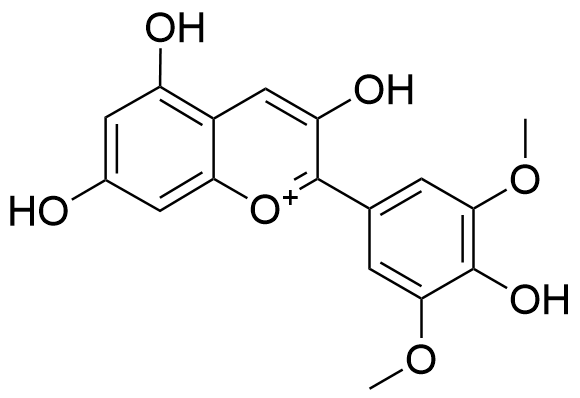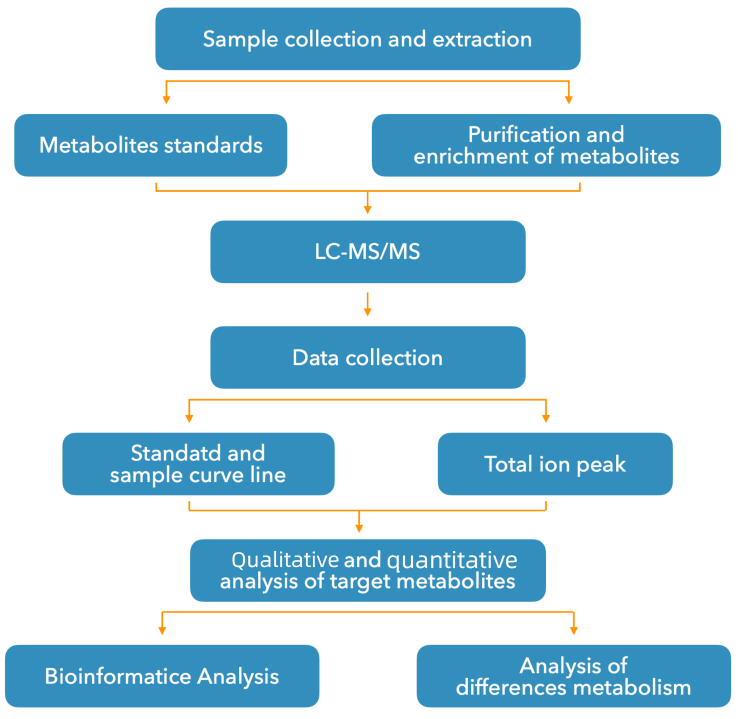Malvidin Analysis Service
Malvidin is a type of anthocyanin pigment widely found in plants. malvidin has the chemical formula C17H15O7+, and its molecular structure contains a benzopyran ring linked to two hydroxyl groups and three methoxy substituents. This configuration enables it to form stable complexes with other molecules, exhibiting different colors. It is present in grapes, berries (such as blueberries and blackberries), red wine, and various other fruits and vegetables as glucosides (such as malvidin-3-glucoside), contributing to the vibrant blue, purple, and red hues of these plants.
Malvidin exhibits various bioactivities, including antioxidant, anti-inflammatory, and anti-cancer properties. These attributes make it a significant focus of research, especially in food science and medicine. Studies have demonstrated that malvidin can protect cells from damage by neutralizing free radicals and reducing oxidative stress. Recent research has revealed its potential benefits in health maintenance and disease prevention. For instance, malvidin can reduce inflammatory responses by inhibiting specific enzymes, aiding in the treatment of inflammatory diseases such as arthritis and inflammatory bowel disease. Additionally, malvidin has shown inhibitory effects on certain cancer cells, indicating potential for novel anti-cancer therapies.
As an important natural pigment and bioactive compound, malvidin has extensive applications in food, health products, and cosmetics. MtoZ Biolabs offers services to detect malvidin levels in samples, thereby uncovering its potential health benefits and contributing to human health advancements.

Figure 1. The Structure of Malvidin
Services at MtoZ Biolabs
1. Malvidin Detection Services
At MtoZ Biolabs, we utilize advanced LC-MS technology to offer comprehensive malvidin detection services. We accurately quantify and characterize malvidin compounds in complex samples, providing detailed insights into their distribution and concentration. The process for detecting malvidin using LC-MS :
1. Sample Preparation: Prepare the samples to be tested (such as fruits, vegetables, or beverages) by homogenizing, centrifuging, and filtering to remove impurities.
2. Sample Extraction: Extract malvidin from the samples using liquid-liquid extraction or solid-phase extraction techniques. Concentrate the extract and redissolve it in an appropriate solvent for LC-MS analysis.
3. Liquid Chromatography Separation (LC): Use a suitable liquid chromatography column (such as a reverse-phase C18 column) with an appropriate mobile phase (such as a methanol and water gradient elution) to separate the sample. Inject the sample into the liquid chromatography system, where malvidin is separated based on its chemical properties.
4. Mass Spectrometry Detection (MS): The separated malvidin compounds enter the mass spectrometer and are ionized by electrospray ionization (ESI) or other ionization techniques. The mass spectrometer detects the ionized malvidin and identifies and quantifies it based on its mass-to-charge ratio (m/z).
5. Data Analysis: Use mass spectrometry data for the qualitative and quantitative analysis of malvidin. Establish the concentration of malvidin in the sample using a standard calibration curve. Process and analyze the results to determine the distribution and abundance of malvidin in the sample.
2. Targeted Metabolomics for Malvidin

Figure 2. The Workflow of Targeted Metabolomics for Malvidin
Sample Submission Requirements
Deliverables
1. Experimental Procedures
2. Relevant Mass Spectrometry Parameters
3. Detailed Information on Malvidin Analysis
4. Mass Spectrometry Images
5. Raw Data
How to order?







